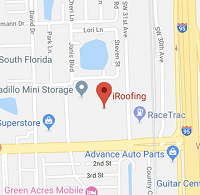The roof isn’t just another part of a home—it’s its protective shield. Just as you wouldn’t go out in the rain without an umbrella, no house should stand without a top-quality roof. The guarantee of this quality? A roofing warranty. Dive in to uncover the immense value of a roofing warranty, not just for homeowners, but for businesses too.
The Roofing Warranty: Your Roof’s Insurance Policy
Imagine making one of the most substantial investments in your home only to face issues curtly after—frustrating, right? That’s the fear every homeowner has when they decide to get a new roof. But a roofing warranty acts as their insurance, ensuring they’re not left in the lurch if something goes amiss.Since there are two separate parties involved in creating and installing a roof, there are three types of roofing warranty: manufacturer warranties, extended manufacturer warranties, and contractor warranties.
There are three types of warranties to familiarize yourself with:
- Manufacturer Warranty – This is the industry-standard warranty that usually covers the shingles used on the roof. While it promises a “lifetime” of coverage, in reality, it means as long as the homeowner occupies the house.
- Extended Manufacturer Warranty – For homeowners who want an extra layer of assurance, there’s the extended warranty. This broadens the coverage from just the shingles to almost every component of the roof, from underlayment to barriers against ice and water. While the price tag might be higher, think of it as buying VIP insurance for your roof.
- Contractor Warranty – Even the best materials can falter if not installed correctly. This warranty ensures that any defects resulting from the installation process are taken care of.
Remember, each warranty has its own set of conditions. It’s like signing a contract – so always read the fine print.

The Golden Perks of Offering Roofing Warranties
However, no reward comes without its challenges. Warranties mean responsibility, potential costs, and ensuring you manage customer expectations correctly. But with transparency, clear communication, and dedication to quality, these challenges become mere stepping stones.
Now, let’s talk business. What's in it for roofing contractors?
- Quality Assurance – A warranty isn’t just a piece of paper. It’s a declaration of trust in the quality of your work.
- Boosting Customer Confidence – It’s simple psychology: when people know there’s a safety net, they’re more likely to take the leap. A warranty could be the deciding factor for many homeowners.
- A Competitive Edge – Stand out in the roofing market! When homeowners are comparing options, a strong warranty could tip the scales in your favor.
- Building Loyalty – Warranties are a testament to your dedication to customer satisfaction, fostering long-term trust and loyalty.
Taking the Leap: Setting Up a Roofing Warranty Program
Pursuant to establishing a legally binding agreement for the initiation of a warranty program, it is advisable to conduct comprehensive research and engage the services of a qualified professional to assist in the drafting of a warranty document. It is noteworthy that the establishment of your warranty program is a singular process, requiring such measures only once.
So, you’re convinced about the merits of offering a warranty. What next?
- Survey the Landscape – Before setting your terms, understand the industry standards and use them as your benchmark.
- Design with Care – Think about every potential issue that could arise and ensure your warranty covers them. A more comprehensive warranty might be what sets you apart.
- Clear Communication – No one likes nasty surprises. Be crystal clear about what your warranty covers, ensuring your customers are always in the know.
- Spread the Word – Once you have your warranty in place, make sure every potential customer knows about it. This could be your key selling point.
In Conclusion: Your Roof, Your Warranty, Your Peace of Mind
Offering a roofing warranty isn’t just a business decision; it’s a commitment to excellence and customer satisfaction. It assures homeowners of the roof’s durability time giving businesses a badge of trustworthiness. Embrace the roofing warranty—your shield against the unexpected, both in business and at home.













